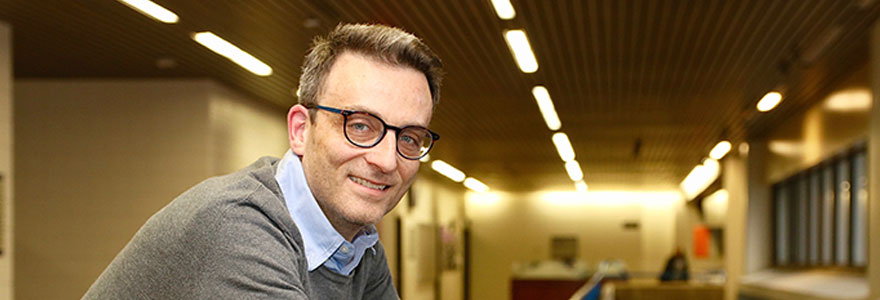News and Updates
Contact
Faculty of Social Science
Social Science Centre
Room 9438
Western University
T. 519-661-2053
F. 519-661-3868
E. social-science@uwo.ca
Prehistoric women more powerful than today’s top female athletes
January 25, 2018
Photo and story by Paul Mayne, Western News
Prehistoric women had stronger arms than even today’s top female athletes, according to the first study to compare their relative bone strength.
The women who lived 6,000 years ago worked so hard at repetitive upper-body labour every day, they developed strong muscles and bone, said Jay Stock, adjunct research professor in the Department of Anthropology.
Stock said women’s activity in prehistory has been difficult to interpret, partly because of a wide variability in their bone changes, sex-specific skeletal differences and a lack of modern comparative data.
This study compared trends in the strength of upper and lower limb bones in prehistoric women with that of modern-day sedentary women and female endurance runners, rowers and soccer players.
Results showed much higher levels of loading on the prehistoric women’s arm bones than their leg bones; and more arm strength than even today’s dedicated female athletes.
Rowers, with the repetitive motion of their arms, had bones that most closely compared with those of the prehistoric women, who worked in agriculture in central Europe. The latter spent hours each day – year after year and generation after generation – using rocks to grind grain into flour.
“Nobody ever thought these women weren’t working hard, but we never had a way to calibrate how hard, and this just underscores the fact their bones are stronger than these women who spend 20 hours a week with weight training and upper-body loading,” said Stock.
“There are a lot of variabilities in what women do in any society, but they were working really, really hard for thousands of years. For 6,000 years, women were really the driving force of the economy because they were producing, storing, making bread, with men doing a lot of task specialization stuff.”
The study, published in the journal Science Advances, highlights how women’s labour was crucial to the development of agriculture, Stock said.
The findings also have important implications for today’s women and health.
It’s often believed building strong bones also necessitates exerting high strains such as heavy lifting, but that’s not necessarily the case, he noted.
“People thought if you’re just doing day-to-day activities, you’re not influencing your skeleton, but what we’re starting to learn is there are differences in activities that have lower strain and (still) build stronger bones,” said Stock. “If you can build stronger bones through high-frequency but lower-strain activity, then you could design osteoporosis prevention around exercise routines that don’t involve really high-impact sports.”
The study also highlights the importance of using female comparative data to interpret ancient female behaviour, rather than comparing female data to that of males’.
“We know hormones influence bone remodeling, and that hormonal differences between males and females mean, when women exercise, they don’t necessarily build as much bone and muscle as men do. But the women athletes showed you can differentiate activities in women, based on their bone morphology. You can tell who the rower is or the distance runner is.”
That meant researchers could also look for similarities and differences in the bones of women who lived and worked millennia ago, added Stock.
“I started from the perspective of wanting to understand the past and how it came to be where we are. But, increasingly, you see the story of where we came from, to where we are today, as being interrelated and we can’t understand the past without understanding ourselves today.”
He said having access at Western to multi-disciplinary areas such as Kinesiology, sport medicine, medical imaging and the Bone and Joint Institute will allow him to continue similar research into the inter-related stories of bone biomechanics and human behaviour.
“It’s the type of work I intend to do here – bridge what’s happening with living humans to what’s happened in the past, and find better ways of interpreting that,” he said. “Trying to understand how far we can go and whether we can get a better and more detailed understanding of what people were doing.”

